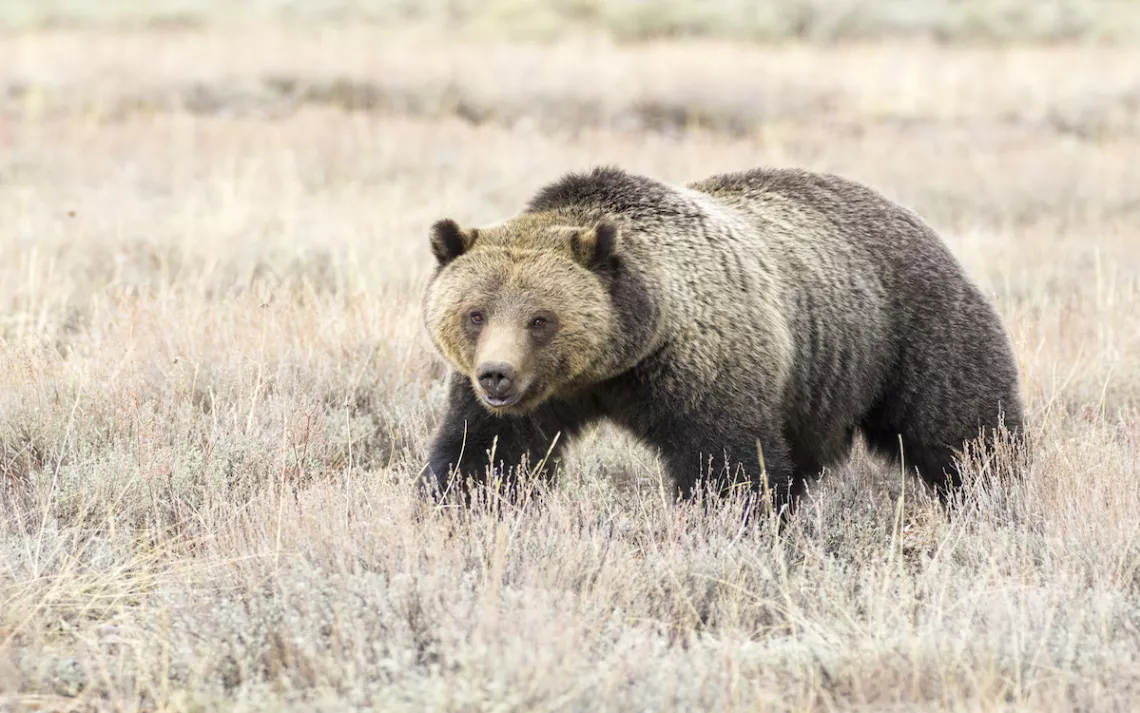Grizzly Bears out of the Crosshairs
Judge restores federal protections for the Yellowstone bruin

Photo by moose henderson/iStock
On Monday, a judge ruled to restore federal protections for grizzly bears in the Greater Yellowstone Ecosystem. The decision marks a victory for a coalition of conservation groups and the Native Americans that sued the U.S. Fish and Wildlife Service for removing the Yellowstone grizzly from the Endangered Species Act’s threatened species list.
“The grizzly is a big part of why the Yellowstone region remains among our nation’s last great wild places,” Earthjustice attorney Tim Preso said in a statement. “This is a victory for the bears and for people from all walks of life who come to this region to see the grizzly in its natural place in the world.”
“We have a responsibility to speak for the bears, who cannot speak for themselves,” said Lawrence Killsback, president of the Northern Cheyenne Nation.
The Yellowstone grizzly has been mired in political debate for years, as federal and state officials have sought to remove ESA protections for the bears while environmental organizations argued that the delisting was premature. That debate reached a peak last month, on the eve of the first trophy hunting season in Wyoming and Idaho in over four decades. After an August 30 hearing in Missoula, U.S. Judge Dana Christensen twice delayed the hunt as he decided whether it should go forward.
On September 24, Judge Christensen issued a court order reinstating Endangered Species Act protections for the Yellowstone grizzly. “This case is not about the ethics of hunting, and it is not about solving human- or livestock-grizzly conflicts as a practical or philosophical matter,” Christensen wrote. “This Court’s review ... is limited to answering a yes-or-no question: Did the United States Fish and Wildlife Service exceed its legal authority when it delisted the Greater Yellowstone grizzly bear?”
The judge found that yes, the agency did exceed that legal authority by employing “arbitrary and capricious” analysis to delist the grizzly and failing to follow the best available science. Wildlife biologists have shown that fully restoring grizzly numbers would require connecting the disparate populations that currently inhabit various mountain ranges in the Northern Rockies. “By delisting the Greater Yellowstone grizzly without analyzing how delisting would affect the remaining members of the Lower 48 grizzly designation,” Christensen wrote, “the Service failed to consider how reduced protections in the Greater Yellowstone Ecosystem would impact the other grizzly populations.”
An estimated 50,000 grizzlies once roamed western North America. By the 1970s, the bears had been constricted to just 2 percent of their former range. Fewer than 140 lived in the Yellowstone region, fewer than a thousand altogether in the contiguous United States. In 1975, the Endangered Species Act granted protections to grizzlies in the Lower 48, and since then their population has doubled. In the Greater Yellowstone Ecosystem, grizzly numbers climbed dramatically to around 700 bears.
“We’re really glad that the court sided with science and law,” said Bonnie Rice, senior representative for the Sierra Club’s Our Wild America campaign. “Restoring endangered-species protections for Yellowstone’s grizzly bears means that we have a real chance at restoring them to full recovery.”
 The Magazine of The Sierra Club
The Magazine of The Sierra Club



